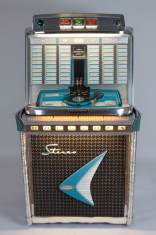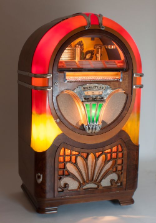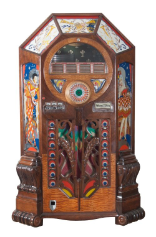from September 19th 2014 through August 30th 2015 – extended until April 10th 2016

With their sound reproduction inventions, pioneers such as the American, Thomas A. Edison, and the German, Emile Berliner, made the whole jukebox phenomenon possible. Its actual inventor is generally accepted to be Louis T. Glass. On 23 November 1889 he and his business partner, William S. Arnold, launched their Nickel-in-the-Slot Player in a San Francisco restaurant, the Palais Royal Saloon.

The golden period of the coin-operated phonograph began in the USA in the 1930s. The term "jukebox" first appeared during the 1940s and quickly spread. Famous American makes including Wurlitzer, Seeburg, Rock-Ola, Mills and Automatic Musical Instrument (AMI) vied for attention, propelling the jukebox to unimaginable popularity.

American soldiers stationed in Germany during the 1950s helped popularise the jukebox on the European continent. However, the boom years proper began with the advent of rock 'n' roll and hits from Bill Haley and Elvis Presley.
Swiss companies, keen for a slice of the lucrative action, joined the fray with products such as the Music-Boy, the Star-o-Mat and the Chantal Panoramic.

